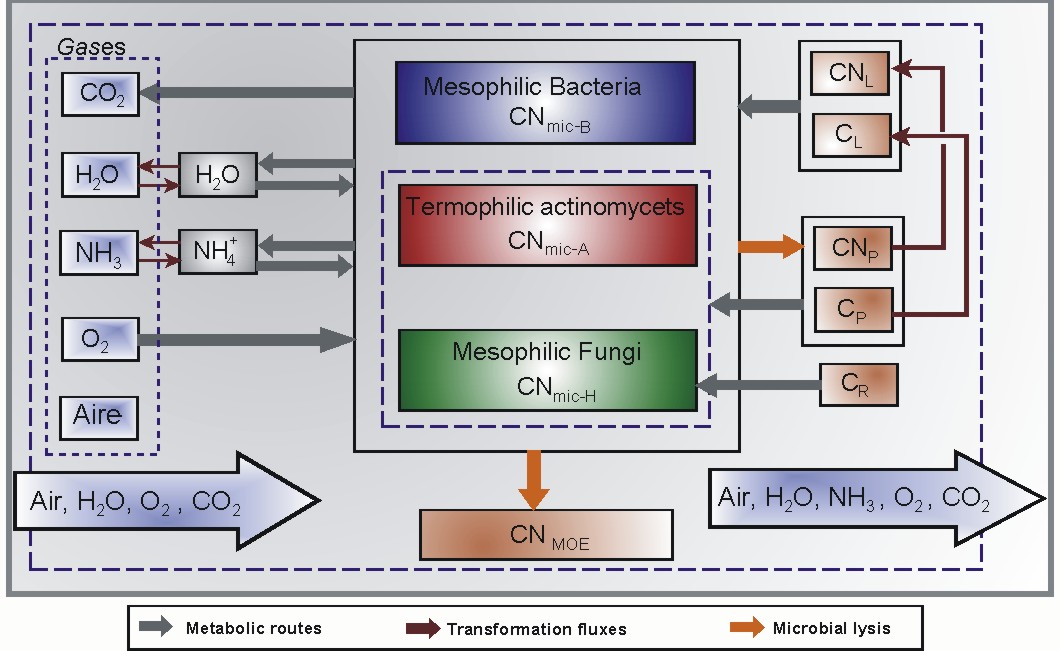Composting
An Individual Based Model to study the composting process
Composting has been defined as "the biological decomposition and stabilization of organic substrates under conditions which allow development of thermophilic temperatures as a result of biologically produced heat, with a final product sufficiently stable for storage and application to land without adverse environmental effects". This definition differentiates composting from the mineralization of dead Organic Matter (OM) taking place in nature above the soil. It describes the compost pile as a man-made microbial ecosystem. Nevertheless, the microbiology of composting is somehow related to soil microbiology, turnover of OM in nature and formation of humic substances. The microbiology of self-heating of moist OM has been studied in the case of agricultural products. This phenomenon led to the concept of heat generation as part of microbial metabolism. If the composting process is carried out as a batch culture it proceeds in various more or less distinct phases which are recognised superficially by the stages of temperature rise and decline. These temperature phases are the reflection of the activities of successive microbial populations performing the degradation of labile OM and increasingly more stable OM. Despite the many facts describing this degradation qualitatively, there are no standard mathematical or computational models of composting processes. There are, however, many ways in which relevant knowledge and hypotheses can be expressed in models. Composting and soil processes share a variety of simultaneously assimilated substrates and microorganisms.
Our group has developed an Individual-based Model to study the composting process. It is divided in two parts. One of them takes into account the evolution and behaviour of different types of organic and mineral compounds, and three different prototypes of microorganisms (mesophilic bacteria, termophilic actinomycetes and mesophilic fungi). The cell model controls the following actions for each individual of this microbial population: motion, uptake, metabolism, reproduction, death and lysis. The medium model considers mass and heat transfer processes, hydrolysis reactions of the complex to simple compounds, and output/input flows of gaseous compoundstakes into account the microbial behaviour and involved chemical processes.

The other part studies the spatial structure of the process. This model includes the transport phenomena (energy and matter) and the mass and energy exchanges between the three phases (liquid, solid and gas). In this way convection and conduction are modelled, as well as water evaporation and condensation. The custom forced convection of industrial composting is another important process to be modelled, as it is of great importance to control parameters like the temperature or the aerobic conditions. These processes are modelled in a two dimensional vertical grid with cubic spatial cells. Each cell contains the three phases and is controlled at each time step. Microorganisms are considered in dissolution in the liquid phase.

(Article in format HTML, 100 KB)
Share: